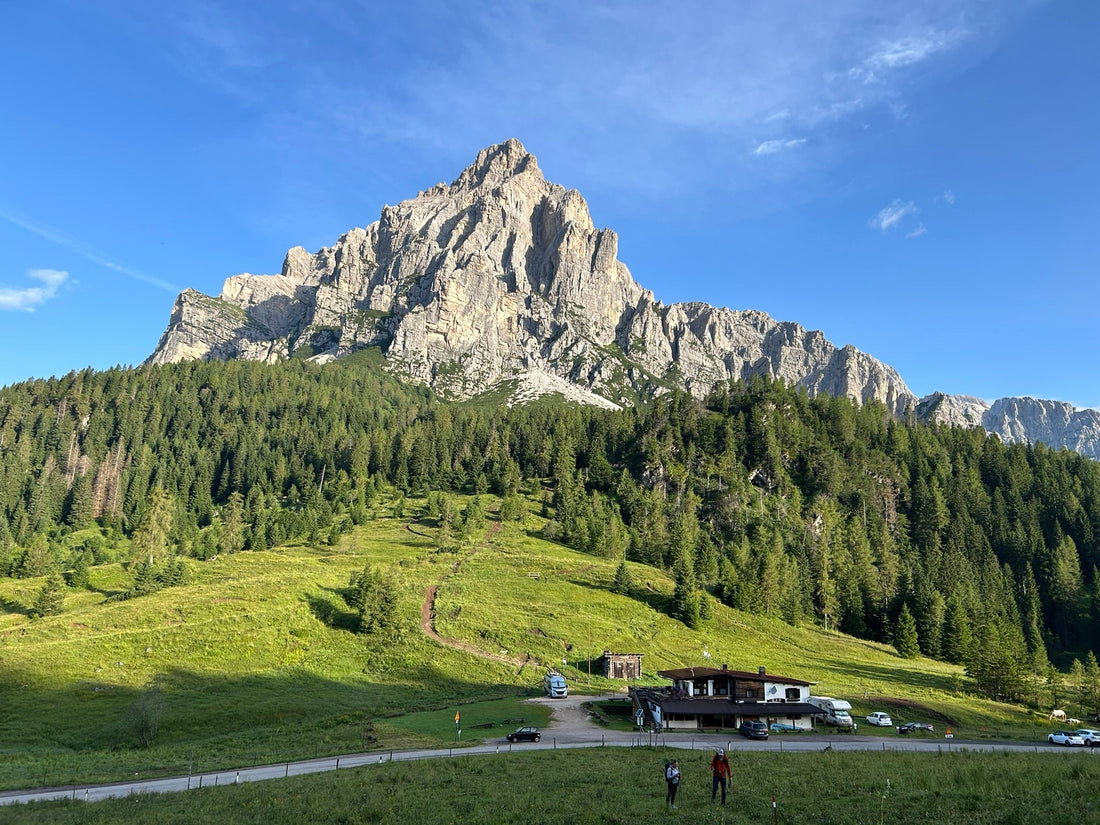
What is the best time of year to hike the Alta Via 1?
Share
The Alta Via 1 is not just a hike; it's an adventure through some of the most jaw-dropping landscapes in the Dolomites. Picture yourself trekking past towering limestone peaks, crossing lush alpine meadows, and ending your days with a cozy meal in a rifugio perched high in the mountains. But hold up—before you lace up those hiking boots, let's talk timing. When should you embark on this legendary trek to get the best experience? Whether you want clear blue skies, fewer crowds, or a bit of both, this guide will help you pick the perfect season for your Alta Via 1 journey.
Spring (April – June): A Season of Unpredictability
Spring in the Dolomites can be beautiful, but it’s not the best time to tackle the Alta Via 1.
Pros:
The valleys and lower elevations are lush and blooming with wildflowers.
Fewer crowds compared to peak summer months.
Cons:
Snow remains on higher passes well into June, making certain sections impassable without mountaineering gear.
Rifugios (mountain huts) along the route remain closed until mid to late June.
Weather can be highly unpredictable, with rain, lingering snow, and sudden temperature drops.
Verdict: If you attempt the Alta Via 1 in the spring, be prepared for snow-covered trails and limited lodging options. Unless you’re an experienced winter hiker, it’s best to wait until summer.
Summer (Late June – Early September): The Ideal Hiking Window
The summer months are hands down the best time to hike the Alta Via 1. This is when the trail is at its most accessible, with the best weather conditions and all rifugios in full operation.
Pros:
The entire trail is snow-free and fully open.
All rifugios are open, allowing for seamless accommodation options.
Long daylight hours give you plenty of time to hike and take in the views.
Warm temperatures make for comfortable hiking conditions.
Cons:
Peak season (July and August) means crowded trails and fully booked rifugios if you don’t plan ahead.
Prices for accommodation and services may be higher.
Afternoon thunderstorms are common, so an early start is recommended each day.
Verdict: If you want the best possible experience on the Alta Via 1, late June through early September is the time to go. Just be sure to book your rifugios well in advance, especially for July and August!
Fall (Mid-September – October): A Quieter, Riskier Option
By mid-September, summer crowds begin to thin, making this an appealing time for hikers looking for solitude. However, it comes with some risks.
Pros:
Fewer hikers mean a more peaceful experience on the trail.
The Dolomites take on gorgeous autumn colors, creating stunning scenery.
Cooler temperatures make for comfortable hiking conditions.
Cons:
Many rifugios begin to close in mid to late September, leaving fewer accommodation options.
Unpredictable weather, with early snowfalls possible in October.
Shorter daylight hours, requiring careful planning for each stage.
Verdict: If you’re prepared for the challenges, September can be a fantastic time to hike. However, waiting until October might mean facing closed accommodations and unpredictable weather.
Winter (November – March): A No-Go for Most Hikers
Hiking the Alta Via 1 in winter is not for the faint of heart. The trail is covered in deep snow, temperatures can drop well below freezing, and most rifugios are closed.
Pros:
Absolute solitude – you’re unlikely to see another hiker.
A completely different, breathtaking winter landscape.
Cons:
The trail is buried in snow, making route-finding difficult and dangerous.
Most rifugios are closed, requiring camping in extreme cold or staying in lower-altitude villages.
Avalanches and extreme weather conditions pose serious risks.
Verdict: Only highly experienced winter hikers with proper gear, training, and avalanche awareness should consider tackling the Alta Via 1 in winter. For most people, it’s best to wait for the summer season.
Final Recommendation: When Should You Hike the Alta Via 1?
For the best balance of accessibility, safety, and stunning scenery, the ideal time to hike the Alta Via 1 is late June through early September. If you prefer fewer crowds and don’t mind some logistical challenges, early September can also be a great choice. No matter when you go, be sure to check the latest weather conditions and book your rifugios in advance.
Are you planning your Alta Via 1 adventure? Let me know in the comments what time of year you’re considering and what questions you have!
Plan Your Ultimate Alta Via 1 Trek with My Digital Guide!
Want to make your Alta Via 1 trek stress-free and unforgettable? Check out my Ultimate Alta Via 1 Digital Guide, packed with everything you need: ✅ A complete rifugio guide with contact info and booking tips
✅ A detailed packing list to keep your pack light and efficient
✅ A step-by-step training plan to get you trail-ready
✅ Must-know tips to help you avoid common pitfalls and hike like a pro
Don't leave your adventure to chance—grab your guide today and hit the trail with confidence!

